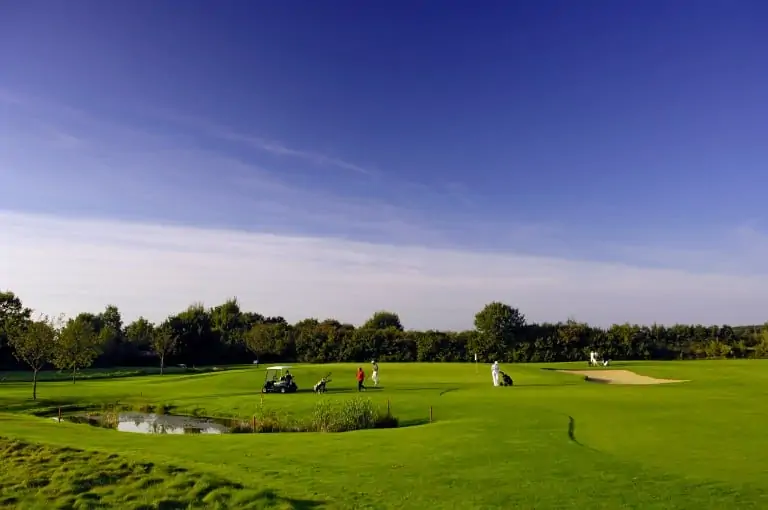GC Escheburg: Knick care means protection of species
The thing with the knick is typical – typical for Schleswig-Holstein and in the golf scene particularly typical for the Escheburg Golf Club in the south-east of Hamburg. “This is the club with the most knicks in Germany,” sums up Gunther Hardt, who heads the biodiversity working group in the DGV and is heavily involved in the topic of Golf and Nature. “Knicks are great.” He is not alone in this opinion. The free-growing hedges on small ridges can only be found here in northern Germany and are protected by both the federal and state nature protection laws because they are considered extremely valuable for species protection.
The Knicks can be found wherever you look at the Escheburg Golf Club, which was recently awarded the Gold & Natur certificate again. Bigger and smaller, wider and thinner. Knickpflege has meanwhile become second nature to the greenkeeping team on the course with an 18-hole course and a public 6-hole course, which belongs to the Schleswig-Holstein Golf Association. After all, after about ten to 15 years, the plants have to be “put on the stick”, i.e. cut down sharply, so that they can rejuvenate.
“We’re quite active in maintaining the landscape there,” sums up Thomas Novak, Vice President. And that on the relatively large area of around 100 hectares, which borders directly on the Sachsenwald. The GC Escheburg started the first activities as part of the Golf & Nature program in 2013. “Right from the start, we tried to treat nature as well as possible.”
In 1996, when the plant was being built, 60,000 heisters, i.e. young trees, were planted. Today they have joined the Sachsenwald in many areas, have become small groves and form a park landscape. “We don’t touch many areas at all,” explains Nowak. Unlike the Knicks, no care is required here.
With the many years of positive development of nature, which is also protected within the framework of various biotopes, perennial flower meadows or numerous forest protection zones along the Sachsenwald, acceptance in the membership has also increased. “In the beginning, many turned up their noses, but now large parts of the membership like it,” Novak draws a positive summary of the activities in the field of golf and nature.
And: The club now has its own eco-account with the authorities, which reflects the positive measures taken to protect the landscape. In the case of renovation work or other measures, some of the eco-points already acquired can then be used in return.
INSERT_STEADY_NEWSLETTER_SIGNUP_HERE








